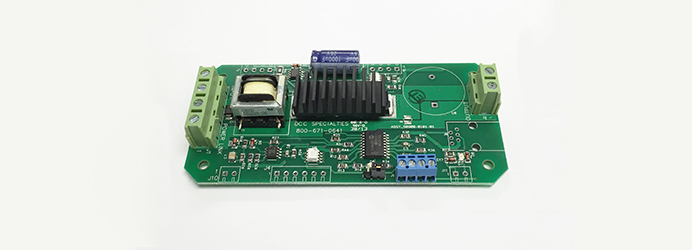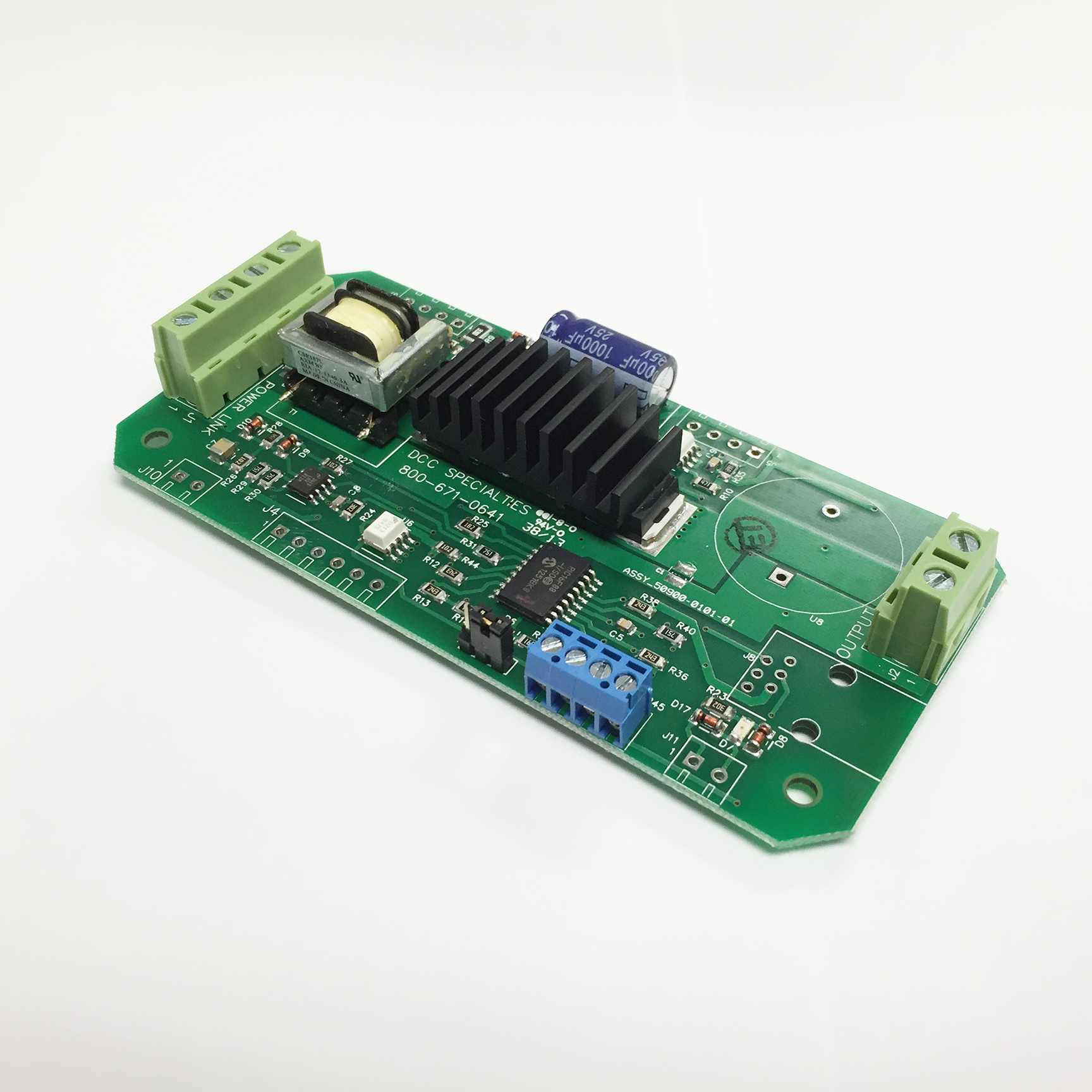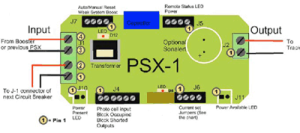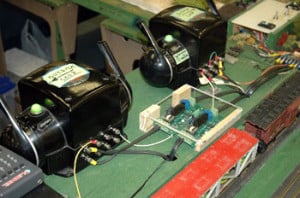 January 27 2014
January 27 2014 AC High Railers Adopting DCC Technology: July 28, 2011
By fisker76
DCC Specialties invented and introduced DCC Power District Circuit Breakers in the early days of DCC around 1994. The need was obvious for multiple operators in spite of the statements by DCC manufacturers that DCC eliminated the need for blocks. While conventional DC (analog) blocks were necessary to control trains independently and DCC basically can control many trains anywhere, anytime, etc; DCC created another problem in that a short anywhere on a one block/district layout would shut down the entire layout. The solution was simple and hence the introduction of DCC circuit breakers to create power blocks/districts.
Now that Command Control is in widespread usage by AC high rail folks the same problem exists and the solution is the same, AC Power District Circuit Breakers. DCC Specialties has been and is now offering the popular PSX PowerShields for AC operations (see also DCC Specialties PSX-AC page).
Richard Ketcham has authored the following piece examining the PSX-AC for "O" Scale ops. Thank you!
AC Power Protection – Is it Necessary for Today's Trains?
Richard Ketcham, Charleston Area Model Railroad Club
One of the reasons for being a member of a mixed gauge railroad club is the wealth of information that each gauge can share between its members. A problem that many O scale 3-rail clubs experience is that they have members that run both “traditional” and what is now called “scale” or “Hi-Rail” trains. Traditional being the trains that most of us had as children – the Lionel's from the 40s and 50s and the hi-rail trains of today being full 1/48 scale units – the same identical trains that our 2 rail 1/48 scale members use. This concept has been further enhanced with manufacturers such as MTH actually producing, as an example, the same diesel locomotive in both 2 and 3 rail. All you do to go from one or the other is move a switch and either remove, or install, the third rail pickups. They even sell replacement wheel sets for either 2 or 3 rail operation. This concept, although not in the powered locomotive side, is also being followed by companies such as Atlas-O, Weaver, and others that sell both 2 and 3 rail trains.
Figure 1, PSX-AC1.
These modern trains have more computer power in them than most early home computers. This then brings up the problem of AC power protection. Our 736s, 2056s, 2343s from the 1950s can, within reason, withstand and handle short circuits, be they caused by a wheel off the track or a wiring problem. The modern trains with all their computer circuits really don't like short circuits. The transformers that most of us use, KWs, ZWs, 1033s or whatever plus even the more modern transformers such as MTH's Z-4000 and Lionel's modern ZW with its 4 180 watt bricks, while they all have some sort of circuit protection, that protection is designed to only protect the transformer itself not the trains. And while that type of protection was adequate back in the 1950s/1960s, with all the circuitry in today's modern trains other protection is required.
We here in Charleston SC first addressed this problem by using fuses for that protection. This worked well until we realized that we were using over 100 fuses every few months. Our Club has 5 separate blocks in an O-Gauge layout that will be, when complete, over 70 feet long. In discussing this problem with some of our HO members the suggestion was made to look into a product sold by American Hobby Distributors, 57 River Rd, Suite 1023, Essex Jct., VT. 05452. Their web address is www.amhobby.com. This device, the PSX-AC1 shown in Figure 1, is an AC circuit breaker that is not only effective but simple to install. The circuit breaker when installed in series with your input power to your track, shuts down all power to that block of track at the first sign of a short circuit. Once the short has been corrected, it automatically restores power to that block.
Figure 2 shows the wiring for a simple single block. The PSX-AC1 is installed in series with the two AC power lines, A and U as an example, from your transformer. The units are very cost effective – they are less than $40 dollars each and when you factor in the cost of repairing a shorted Lionel/MTH/Atlas circuit board at over $100 for just the mother board and not adding the additional cost for the sound and power cards, the AC circuit breaker boards are very inexpensive indeed.
Figure 2. Wiring for a simple single block.
Figure 3 shows how the PSX-AC device was installed on our Club layout. We added two options to the PSX-ACs that we use; one was an audible alarm. The alarm, the Sonalert, is made by Digikey and their part number for that item is 458-1005. You can either have it installed when you order the PSX-ACs or you can later add it yourself. We found the alarm to be effective in that while not overwhelming in sound, it creates a signal that you can hear if you have problems on the layout. The second was a set of screw terminals so that we could adjust the “trip” current for the circuit itself. Table 1 shows the jumper setting you need for different trip currents. Depending on what the members run, be it a Lionel 736 with 5 or 6 lighted passenger cars or a modern 2 or 4 motor diesel pair with 30 or 40 cars behind it, we found that we needed to use either the 12.2 amp or the 15.4 amp setting. By using the screw terminals you can fine-tune your current settings.
Figure 3. Two PSX-AC installed on Club Layout.
| Trip Current Jumper Settings for J6 | ||||
|---|---|---|---|---|
| Connector J6 | Terminal #1 | Terminal #2 | Terminal #3 | Terminal# 4 |
| 4.8 Amps | None | None | None | None |
| 8.0 Amps | Connect | Connect | ||
| 12.2 Amps | Connect | Connect | ||
| 15.4Amps | Connect | Connect | Connect | Connect |
We have been using the PSX-ACs for about 10 months now and have found them to be very effective on our Club layout. Oh yes, for those of you who joined us for the annual TTOS Convention that was held in Charleston SC this year you got to see how simple and effective the units are.



